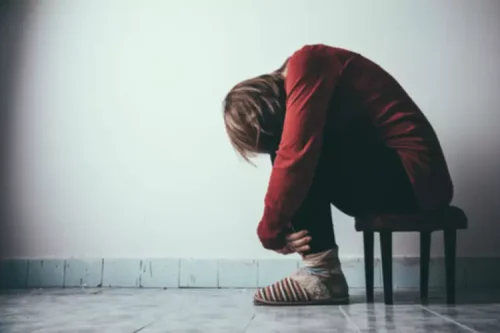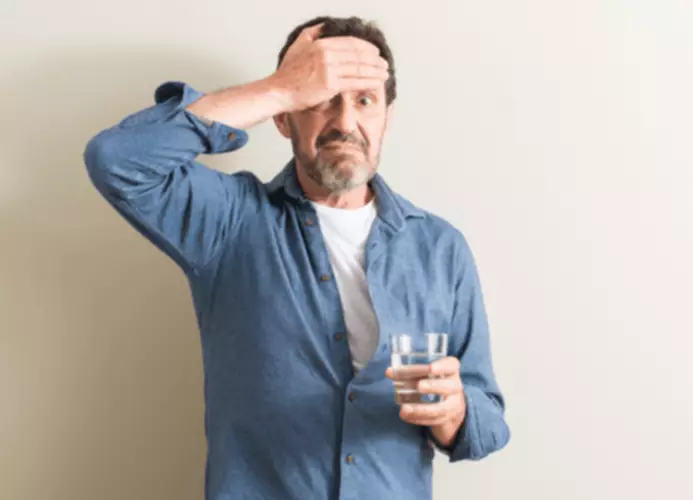
The best known of these drugs is Ozempic, a medication for diabetes often prescribed for its off-label use as a weight loss aid. A new study published in the journal Addiction on October 16 investigates whether GLP-1 RAs could prove to be effective treatments for substance use disorders (SUDs). Building a strong support network and actively engaging in healthy coping mechanisms can significantly reduce the risk of relapse. Additionally, ongoing self-reflection and seeking professional help when needed can empower individuals on their recovery journey. Future studies are recommended to investigate the effectiveness of the existing relapse prevention programs in order to adjust prevention strategies.
- Numerous studies have shown that the parent’s primary role during treatment is to provide support, and in some cases, this involves treatment for the parent directly 35.
- If you notice any of these signs or symptoms, call 911 immediately, try to wake the person, check for breathing, administer Naloxone if possible and stay with the person until medical help arrives.
- Thus, the validity of spontaneous recovery is primarily anecdotal at this point.
- The most common causes of alcohol relapse are similar to other substances, but with an important exception.
- Average relapse rates for all substances are between percent, which means patients in recovery are about as likely to relapse as they are not to relapse.
Predictors of short-term remission
- The AA model — open to all and free — has spread around the globe, and AA now boasts over 2 million members in 180 nations and more than 118,000 groups.
- The addiction treatment community as a whole will benefit from the understanding that no matter the quality of care that a given facility can offer patients struggling with alcohol use disorders, relapse is inevitable.
- Understanding these variations helps tailor treatment plans to individual needs.
- People who become overconfident in their ability to stay sober may put themselves at risk by decreasing recovery meeting attendance, exposing themselves to triggers or trying to control how much they drink instead of abstaining.
Relapse rates for individuals recovering from addiction can vary significantly based on whether they receive professional treatment or not. In this article, we’ll discuss addiction and relapse, specifically relapse rates for various addictions to help you understand specific challenges and plan accordingly. The FHE Health team is committed to providing accurate information that adheres to the highest standards of writing. If one of our articles is marked with a ‘reviewed for accuracy and expertise’ badge, it indicates that one or more members of our team of doctors and clinicians have reviewed the article further to ensure accuracy.
Epidemiology of Recovery From Alcohol Use Disorder

The first goal is to help the patient understand the importance of self-care. The second goal is to help patients recognize their denial so they can further understand the need to take steps to avoid progressing through the stages of a relapse. A total of 4 individuals did not have 6 month follow up data available and were excluded from the analyses. Relapse is usually triggered by a person, place or thing that reminds a person of alcohol. The statistics presented in this article underscore the pervasive nature of relapse among individuals recovering from addiction. Engaging in high-risk behaviors or situations, such as attending parties where substances are present, can trigger relapse.
Support Our Mission
- One primary concern in addiction treatment is the high rate of relapses within a short period after even the most intensive treatment.
- Different types of medications may be useful at different stages of treatment to help a patient stop abusing drugs, stay in treatment, and avoid relapse.
- When a person receives treatment for addiction to any substance, relapse is common, but alcohol relapse rates are thought to be much higher than in other substance use disorders.
- Counselors may select from a menu of services that meet the specific medical, mental, social, occupational, family, and legal needs of their patients to help in their recovery.
- Another reason why alcohol relapse rates may be higher than rates for other substances is the belief that alcohol is easy to detox from, causing many alcoholics to do so without professional help from dedicated addiction medicine specialists.
Alcohol relapse occurs in almost one-third of recovering alcoholics during their first year of sobriety. Denial is used as a way to protect against having to see, deal with, or accept the truth about what is happening in an abuser’s life. A alcoholism relapse rate .gov website belongs to an official government organization in the United States.
Most Common Causes Of Relapse

Documentation is critical when there is denial of excessive alcohol or drug abuse. Liquor store purchases can be used as evidence of alcohol abuse by showing purchases of excessive amounts of alcohol. In one case, the mother made regular purchases from five different liquor stores in her neighborhood to hide her actual consumption from any one store owner at purchase. Videos or photographic evidence of empty bottles of alcohol or of the individual leaving a bar unable to walk. In another case, the father was seen staggering upon leaving a bar where he could be seen drinking beer. One of the most prominent medical developments in recent years has been the emergence of a class of drugs called glucagon-like peptide-1 receptor agonists (GLP-1 RAs).
Furthermore, researchers don’t follow up with study participants after the same amount of time. Thus, the validity of spontaneous recovery is primarily anecdotal at this point. Although the term «recovery coach» was first used in 2006, the service has not gained wide adoption in addiction treatment. Peer recovery coaches are individuals who have experienced addiction themselves but have been abstinent for an extended period (often at least one or two years). Peer recovery coaches complete approximately 40 hours of training in addition to a minimum number of hours of work in the field to obtain certification. Peer recovery coaches can then contract with clinics or offices to work one-on-one with assigned individuals as a service that is billable through Medicaid in many areas.22 Culturally-specific training programs have undergone development in some areas.

According to the National Institute on Alcohol Abuse and Alcoholism (NIAAA), approximately one-third of individuals who have been treated for alcohol use disorder are able to recover and maintain long-term sobriety. Alcoholism is a chronic disease that affects millions of people around the world. While many individuals are able to overcome their addiction and lead a sober life, others struggle with relapse. In fact, research shows that relapse rates for alcoholics can be as high as 50-60%. In this article, we will explore alcohol relapse statistics and what they mean for those struggling with addiction. Hence, we decided to undertake the study to compare the correlates of relapse in alcohol and opioid dependence.
Power Tips for Managing Mental Health Post-Pandemic

Addressing the nation’s mental https://ecosoberhouse.com/ health crisis and drug overdose epidemic are core pillars of the Biden-Harris Administration’s Unity Agenda for the nation. These investments enabled the expansion of lifesaving prevention, treatment and recovery services and supports in communities throughout the country. The current report leverages data to examine the factors – such as spirituality, treatment, insurance coverage and social supports – that support recovery from substance use and mental health problems more clearly. Through this effort, SAMHSA can better achieve its vision that people with, affected by or at risk for mental health and substance use conditions receive care, achieve well-being and thrive.
To understand the numbers pertaining to alcohol relapse, we first have to look at relapse rates for substance use disorders (SUDs) as a whole. According to the National Institute on Drug Abuse (NIDA), an addict who gets clean through any means will relapse at about a 40 to 60 percent rate. Of course, not all detox and treatment are created equal, but these numbers are consistent with other common chronic diseases. The Recovery Village aims to improve the quality of life for people struggling with a substance use or mental health disorder with fact-based content about the nature of behavioral health conditions, treatment options and their related outcomes. We publish material that is researched, cited, edited and reviewed by licensed medical professionals.